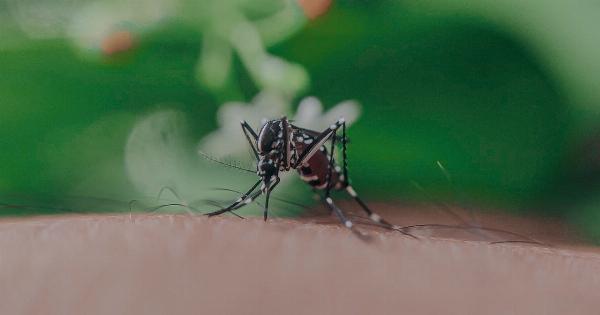Hair loss can happen to anyone, and it can be caused by various factors such as genetics, hormonal changes, medical conditions, and certain medications. However, when hair loss occurs in the legs, it could be a sign of poor blood circulation.
Unexplained hair loss in the legs can be a warning sign of circulation problems, which can lead to serious health conditions if left untreated. In this article, we will discuss the causes and symptoms of circulation problems that can cause hair loss in the legs, and how to prevent and treat them.
What is Poor Circulation?
Poor circulation, also known as peripheral artery disease (PAD), occurs when there is a decrease in blood flow to the legs, feet, and other body parts.
This condition is caused by the buildup of plaque in the arteries, which makes it difficult for blood to flow freely. When the arteries become narrow or blocked, the tissues in the legs can become starved of oxygen and essential nutrients, and this can lead to hair loss and other symptoms.
Causes of Poor Circulation
There are several causes of poor circulation, including:.
1. Diabetes
Diabetes is a metabolic disorder that affects how the body uses blood sugar (glucose). Over time, high blood sugar levels can damage the blood vessels and nerves that supply the legs and feet, leading to poor circulation and hair loss.
Diabetic neuropathy, a complication of diabetes, can also cause numbness and tingling in the feet and legs.
2. Smoking
Smoking is a major risk factor for poor circulation and hair loss. Smoking causes the blood vessels to narrow, reducing blood flow to the legs and feet. Over time, smoking can cause premature aging of the skin, hair loss, and other health problems.
3. High Cholesterol
High cholesterol levels in the blood can lead to a buildup of fatty deposits in the arteries, causing them to narrow and reducing blood flow to the legs and feet. This can lead to hair loss, leg pain, and other symptoms of poor circulation.
4. Heart Disease
Heart disease, including coronary artery disease and heart failure, can cause poor circulation to the legs and feet. Heart disease can cause the heart to pump less blood, leading to a decrease in blood flow to the legs and other parts of the body.
This can lead to hair loss and other symptoms.
5. Obesity
Obesity is a risk factor for poor circulation and hair loss. Excess weight can put pressure on the blood vessels, leading to reduced blood flow to the legs and feet.
Losing weight and maintaining a healthy diet can help improve circulation and reduce the risk of hair loss.
Symptoms of Poor Circulation
The symptoms of poor circulation can vary depending on the severity of the condition. Common symptoms of poor circulation include:.
1. Hair Loss in the Legs
Unexplained hair loss in the legs can be a warning sign of poor circulation. This is because when blood flow to the legs is restricted, the hair follicles can become starved of oxygen and essential nutrients, leading to hair loss.
2. Leg Pain
Leg pain is a common symptom of poor circulation. The pain can be aching, cramping, or burning in nature, and it usually occurs with activity and improves with rest.
3. Numbness and Tingling in the Legs
Numbness and tingling in the legs can be a sign of poor circulation. This can be caused by nerve damage due to reduced blood flow to the legs.
4. Cold Feet
Cold feet can be a sign of poor circulation. When blood flow to the feet is restricted, the feet can become cold and numb. This can be especially noticeable in the winter months when the temperature drops.
5. Slow Healing Wounds
Poor circulation can also affect wound healing. When the blood flow to the legs is restricted, it can take longer for wounds to heal, and the risk of infection is increased.
Preventing and Treating Poor Circulation
There are several lifestyle changes and treatments that can help prevent and treat poor circulation, including:.
1. Quit Smoking
If you smoke, quitting smoking is the most important thing you can do to improve your circulation and reduce the risk of hair loss. Smoking damages the blood vessels and reduces blood flow to the legs, leading to hair loss and other health problems.
2. Exercise
Regular exercise can help improve circulation and reduce the risk of hair loss. Exercise helps to strengthen the heart and blood vessels, improving blood flow to the legs and other parts of the body.
Walking, cycling, and swimming are all good forms of exercise for improving circulation.
3. Maintain a Healthy Diet
Diet plays an important role in preventing and treating poor circulation. Eating a diet that is low in cholesterol and saturated fat and rich in fruits, vegetables, and whole grains can help to reduce the risk of hair loss and other health problems.
4. Manage Diabetes
If you have diabetes, it is important to manage your blood sugar levels to reduce the risk of hair loss and other complications. This can be done through diet, exercise, medication, and regular blood sugar monitoring.
5. Medication
In some cases, medication may be prescribed to improve circulation and reduce the risk of hair loss. Medications such as blood thinners, cholesterol-lowering drugs, and high blood pressure medications can all help improve circulation.
Conclusion
Hair loss in the legs can be a warning sign of poor circulation, which can lead to serious health problems if left untreated.
By making lifestyle changes such as quitting smoking, exercising, and maintaining a healthy diet, and seeking medical treatment if necessary, you can improve your circulation and reduce the risk of hair loss and other complications.






















